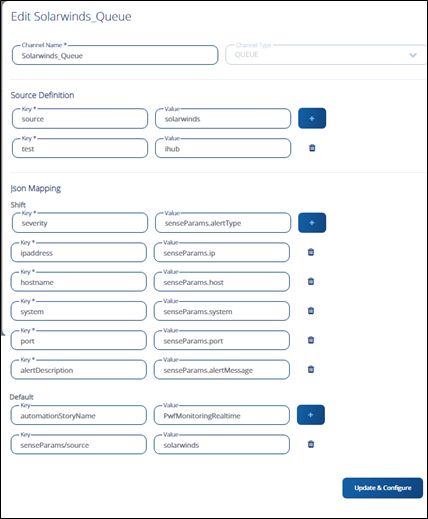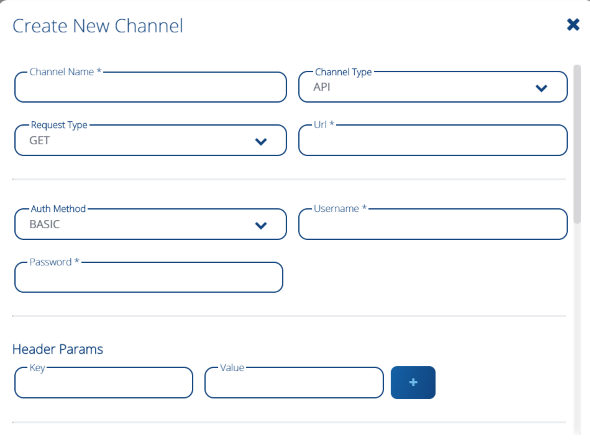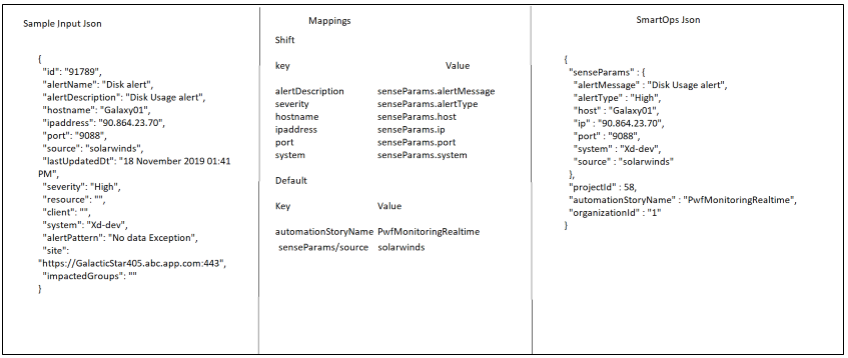Channel - Queue
Queue channels enables iHub to accept incoming messages from RabbitMQ queue. Each organization will have a separate IHub inbound queue.
-
The Create New Channel window displays the Source Definition and JSON Mapping blocks as shown in FigureFigure.
Source Definition block enables to identify the source of the incoming JSON file. For example: Key: Source and Value: Solarwinds.
JSON Mapping enables to map the input value in the incoming request against the output value in SmartOps. For example: Key: alertdescription, and Value: senseParams.alertMessage. This indicates that alertdescription value from incoming request should be mapped to alertMessage field inside senseParams map of SmartOps JSON.
You may also add an extra field, not available in input JSON, with a default value in output SmartOps JSON in Default block. For example: Key: Automationstory, Value: PwfMonitoringRealtime.
-
Define the configurations as explained in the table:
Field
Description
Source Definition
Key
Indicator of the source attribute. For example: Name
Value
Name of the source. For example: Solarwinds
Json Mapping - Shift
Key
Value available in Input JSON.
Value
Value to be mapped in SmartOps.
Json Mapping - Default
Key
Field to be passed to SmartOps that is not available in input.
Value
Name / Value for the field.
An example of screen configurations is as shown in FigureFigure:
-
To save the configurations, click Save & Configure. An example of JSON Mapping is as shown in FigureFigure

